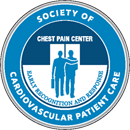Community Advocacy & Education
Early Heart Attack Care™ (EHAC) education is a public awareness campaign created by Chest Pain Center founder Dr. Raymond Bahr.
The primary goal of EHAC® is to promote awareness that heart attacks have "beginnings" that can occur weeks before the actual attack. EHAC focuses on intervention during these beginnings to help prevent acute myocardial infarction (heart attack) and cardiac arrest.
Early symptoms, such as mild or stuttering chest pain, are identified as major risk factors for heart attack. Adults often ignore these warnings and put themselves at risk for significant damage to the heart muscle, or even death. The signs of an impending heart attack may occur days or weeks before the actual event. These early symptoms need to be recognized and treated early to avoid the damage caused by a full-blown heart attack.
The second goal of EHAC is to teach the public that individuals with heart attack symptoms be evaluated and treated in an emergency department (ED) or chest pain center (CPC).
Experts there are trained in the rapid evaluation of patients, bringing together ED physicians, nurses, cardiologists, and technicians who work as a team to establish a comprehensive management plan for patients with chest pain.
We pursue the mission of transforming cardiovascular care and improving heart health by providing education and accreditation to forward thinking healthcare facilities.









